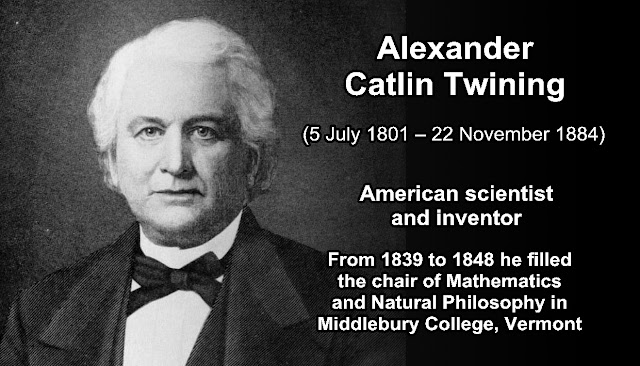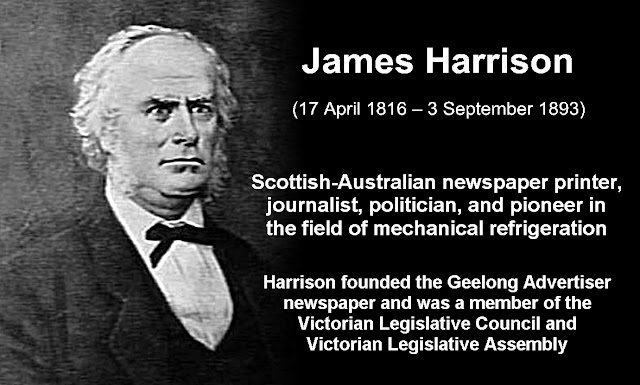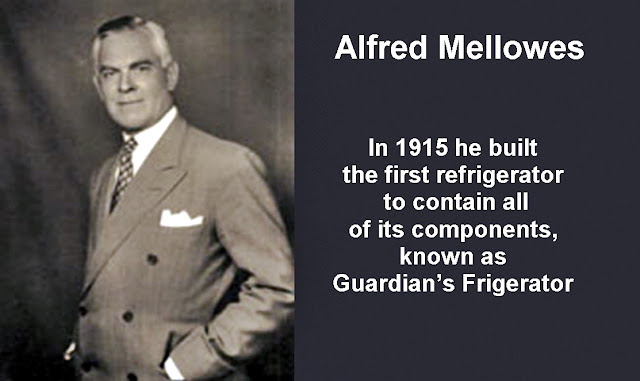Sunday, April 9, 2023
History of the fridge and refrigeration
Before the invention of the refrigerator, icehouses were used to provide cool storage for most of the year. Placed near freshwater lakes or packed with snow and ice during the winter, they were once very common. Natural means are still used to cool foods today. On mountainsides, runoff from melting snow is a convenient way to cool drinks, and during the winter one can keep milk fresh much longer just by keeping it outdoors. The word "refrigeratory" was used at least as early as the 17th century.
The history of artificial refrigeration began when Scottish professor William Cullen designed a small refrigerating machine in 1755. Cullen used a pump to create a partial vacuum over a container of diethyl ether, which then boiled, absorbing heat from the
surrounding air. The experiment even created a small amount of ice, but had no practical application at that time.
In 1805, American inventor Oliver Evans described a closed vapor-compression refrigeration cycle for the production of ice by ether under vacuum. In 1820, the British scientist Michael Faraday liquefied ammonia and other gases by using high pressures and low temperatures, and in 1834, an American expatriate in Great Britain, Jacob Perkins, built the first working vapor-compression refrigeration system. It was a closed-cycle device that could operate continuously. A similar attempt was made in 1842, by American physician, John Gorrie, who built a working prototype, but it was a commercial failure. American engineer Alexander Twining took out a British patent in 1850 for a vapor compression system that used ether.
The first practical vapor compression refrigeration system was built by James Harrison, a Scottish Australian. His 1856 patent was for a vapor compression system using ether, alcohol or ammonia. He built a mechanical ice-making machine in 1851 on the banks of the Barwon River at Rocky Point in Geelong, Victoria, and his first commercial ice-making machine followed in 1854. Harrison also introduced commercial vapor-compression refrigeration to breweries and meat packing houses, and by 1861, a dozen of his systems were in operation.
The first gas absorption refrigeration system using gaseous ammonia dissolved in water was developed by Ferdinand Carré of France in 1859 and patented in 1860. Carl von Linde, an engineering professor at the Technological University Munich in
Germany, patented an improved method of liquefying gases in 1876. His new process made possible the use of gases such as ammonia, sulfur dioxide and methyl chloride as refrigerants and they were widely used for that purpose until the late 1920s.
In 1914, engineer Nathaniel B. Wales of Detroit, Michigan, introduced an idea for a practical electric refrigeration unit, which later became the basis for the Kelvinator. Mellowes produced this
refrigerator commercially but was bought out by William C. Durant in 1918, who started the Frigidaire company to mass-produce refrigerators. In 1918, Kelvinator company introduced the first refrigerator with any type of automatic control. The absorption refrigerator was invented by Baltzar von Platen and Carl Munters from Sweden in 1922, while they were still students at the Royal Institute of Technology in Stockholm. It became a worldwide success and was commercialized by Electrolux.
These home units usually required the installation of the mechanical parts, motor and compressor, in the basement or an adjacent room while the cold box was located in the kitchen. There was a 1922 model that consisted of a wooden cold box, water-cooled compressor, an ice cube tray and a 9-cubic-foot compartment, and cost $714.
By 1923, Kelvinator held 80 percent of the market for electric refrigerators. Also in 1923 Frigidaire introduced the first self-contained unit. About this same time porcelain-covered metal cabinets began to appear. Ice cube trays were introduced more and more during the 1920s. Up to this time freezing was not an auxiliary function of the modern refrigerator.
The first refrigerator to see widespread use was the General
Electric "Monitor-Top" refrigerator introduced in 1927, so-called because of its resemblance to the gun turret on the ironclad warship USS Monitor of the 1860s. The compressor assembly, which emitted a great deal of heat, was placed above the cabinet, and enclosed by a decorative ring. Over a million units were produced. As the refrigerating medium, these refrigerators used either sulfur dioxide, which is corrosive to the eyes and may cause loss of vision, painful skin burns and lesions, or methyl formate, which is highly flammable, harmful to the eyes, and toxic if inhaled or ingested. Many of these units are still functional today, after requiring little more service than a replacement start relay or thermostat if at all. These cooling systems cannot legally be recharged with the hazardous original refrigerants if they leak or break down.
The introduction of Freon in the 1920s expanded the refrigerator market during the 1930s and provided a safer, low-toxicity alternative to previously used refrigerants. Separate freezers became common during the 1940s. The popular term at the time for the unit was a deep freeze.
Home freezers as separate compartments, larger than necessary just for ice cubes, or as separate units, were introduced in the United States in 1940. Frozen foods, previously a luxury item, became commonplace.
These devices, or appliances, did not go into mass production for use in the home until after second world war. The 1950s and 1960s saw technical advances like automatic defrosting and automatic ice making. More efficient refrigerators were developed in the 1970s and 1980s, even though environmental issues led to the banning of
very effective Freon refrigerants.
Refrigeration technology has continued to improve over the years. Refrigerators are currently environmentally friendly by using CFC-free coolants and consume less energy than their predecessors by having more efficient cooling systems.


















